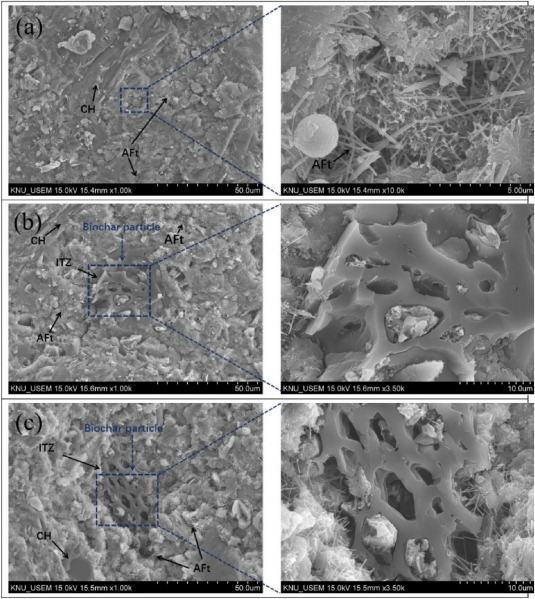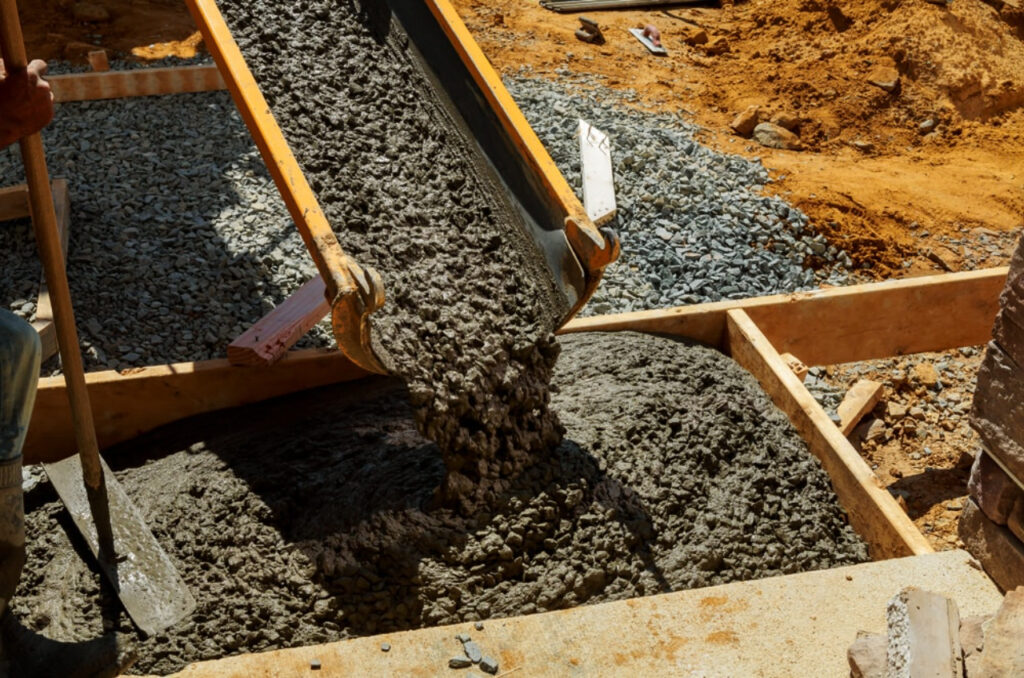From Korea University 11/09/23

Carbon dioxide (CO2) emissions from human activities are the primary drivers of climate change and rising global temperatures.
Among the many anthropogenic activities resulting in CO2 emissions, those undertaken by the construction industry have a significant carbon footprint.
Therefore, it is essential to mitigate these emissions by switching to low-carbon sustainable construction materials that use bio-based constituents.
One such popular bio-based alternative is biochar.
Biochar is the carbon-rich product of the thermochemical conversion of biomass in an oxygen-deficient environment, which has found use in soil amendment in agriculture, as an adsorbent for water and air purification, and as an additive in asphalt for road construction.
Biochar is among the most promising materials for carbon sequestration owing to its property to adsorb more than twice its weight in CO2.
Therefore, it is now finding applications as a substitute for cement in concrete production.
While other bio-based materials are known to decrease the structural performance of concrete, studies show that biochar can enhance such properties if used correctly.
Adding biochar to concrete enhances its mechanical properties and contributes to sustainability objectives.
It further reduces the need for traditional cement content, which is desirable given that cement production contributes significantly to carbon emissions.
By replacing a portion of cement with biochar, corporate practitioners can substantially lower the carbon footprint of infrastructure development.

What are the benefits and challenges of using biochar in cement?
A new article made available online on July 22, 2023, and published in October 2023 in Volume 143 of the journal Cement and Concrete Composites collates the latest research on this topic and provides an in-depth overview of not only the cementitious performance and physicochemical properties of biochar as a construction material, but also its suitability as a sustainable additive in cement, for both economically and ecologically beneficial outcomes.
“Since cement production is responsible for about 8% of global CO2 emissions, the core objective of this article is to highlight the potential of biochar in significantly reducing the carbon footprint of the construction industry, while also being economical,” says Prof. Yong Sik Ok, who is the Chair and Director of the Association of Pacific Rim Universities (APRU) Sustainable Waste Management Program, President of the International ESG Association (IESGA), HCR (Highly Cited Researcher) Professor at Korea University, and lead author of the article.
ESG practices encompass social responsibility and community engagement.
Adopting biochar-infused concrete demonstrates a commitment to sustainable construction practices, which can positively impact local communities.
Reduced emissions and improved air quality, resulting from lower cement usage, can lead to healthier living environments for nearby residents.
Corporate practitioners can foster positive relationships with communities by showcasing their dedication to minimizing environmental impacts by advocating for the use of biochar-infused concrete.

“In the long term, biochar can transform the construction industry by influencing architectural practices, urban planning, and infrastructure development toward carbon neutrality.
It could also influence industry standards and policies to enable the adoption of other sustainable practices, such as adherence to ESG frameworks, and pave the way for job creation and economic growth in this sector.
By reducing the industry’s carbon footprint and fostering sustainable construction practices, our work on biochar could significantly contribute to a greener, more resilient, and socially responsible built environment that positively impacts the lives of both current and future generations,” concludes a hopeful Prof. Ok.
Here’s hoping his visions come true.



